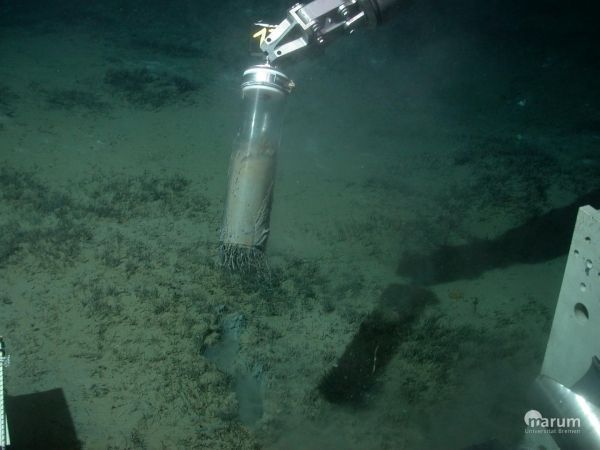Large quantities of the greenhouse gas methane are stored in the seabed. Fortunately, only a small fraction of the methane reaches the atmosphere, where it acts as a climate-relevant gas, as it is largely degraded within the sediment. This degradation is carried out by a specialized community of microbes, which removes up to 90 percent of the escaping methane. Thus, these microbes are referred to as the “microbial methane filter”. If the greenhouse gas were to rise through the water and into the atmosphere, it could have a significant impact on our climate.
But not everywhere the microbes work so efficiently. On sites of the seafloor that are more turbulent than most others – for example gas seeps or so-called underwater volcanoes -, the microbes remove just one tenth to one third of the emitted methane. Why is that? Emil Ruff and his colleagues from the Max Planck Institute for Marine Microbiology and the University of Bremen aimed to answer this question.
Methane consumption around a mud volcano
In the North Sea off Norway at 1250 meters water depth lies the Håkon Mosby mud volcano. There, warm mud from deeper layers rises to the surface of the seafloor. In a long-term experiment, Ruff and his colleagues were able to film the eruption of the mud, take samples and examine them closely. “We found significant differences in the different communities on-site. In fresh, recently erupted mud there were hardly any organisms. The older the mud, the more life it contained”, says Ruff. Within a few years after the eruption, the number of microorganisms as well as their diversity increased tenfold. Also, the metabolic activity of the microbial community increased significantly over time. While there were methane consumers even in the young mud, efficient filtering of the greenhouse gas seems to occur only after decades.
Read more at Max Planck Institute for Marine Microbiology
Image: The submersible takes samples in the mud around Håkon Mosby mud volcano. With this tube so-called sediment cores can be taken, which allow an insight into the community of organisms on the surface and deeper in the sediment. (Credit: MARUM - Centre for Marine Environmental Sciences, University of Bremen)


